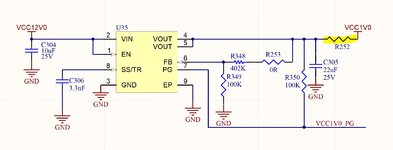cane21
Junior Member level 1
Hi all,
If I’d like to isolate the output of my voltage regulator from the power plane, would it be better to use a solder bridge/blob or a 0 ohm resistor?
If the regulator voltage output is max 10A @ 1.2V what is the maximum current that an 0805 sized solder blob can carry and how would I select a 0 ohm Resistor for this purpose?
If I’d like to isolate the output of my voltage regulator from the power plane, would it be better to use a solder bridge/blob or a 0 ohm resistor?
If the regulator voltage output is max 10A @ 1.2V what is the maximum current that an 0805 sized solder blob can carry and how would I select a 0 ohm Resistor for this purpose?
